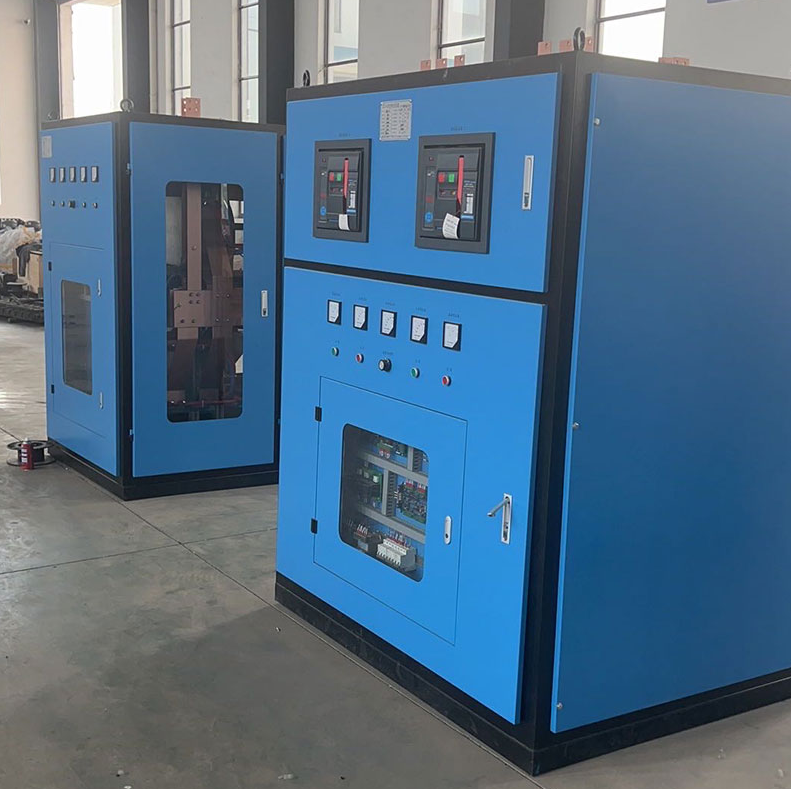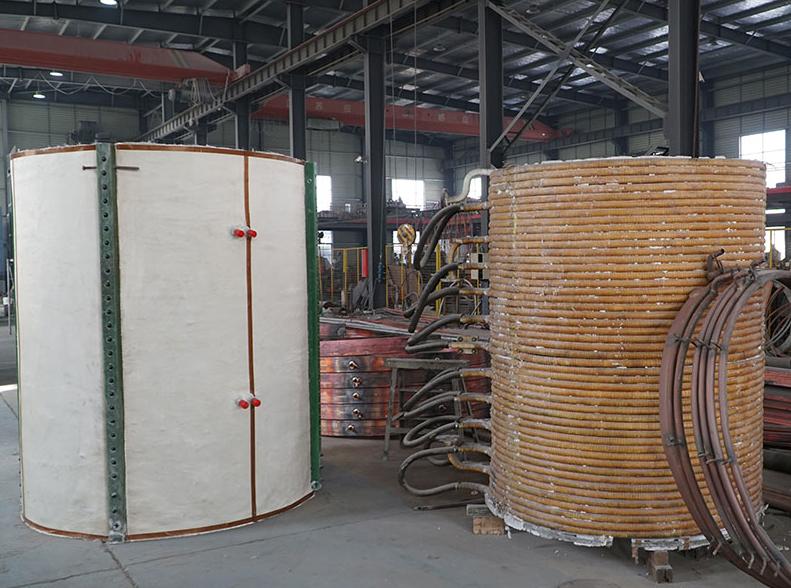Induction Furnace Scrap Melting: A Pathway to Sustainable Manufacturing
Recycling Scrap Metal with Efficiency and Precision
Have you ever wondered how billions of tons of discarded metal are transformed into usable resources for manufacturing? The answer lies in the advanced technology of induction furnace scrap melting. This process is central to the global scrap metal recycling industry, which has seen remarkable growth and innovation in recent years. As sustainability becomes increasingly important, the need for efficient and energy-saving methods for recycling scrap metal is more critical than ever.
In this blog, we’ll explore the status of scrap metal recycling, the importance of induction furnaces, and how industries are addressing challenges in scrap melting to boost efficiency, reduce costs, and contribute to environmental sustainability.
The Scrap Metal Recycling Market: Growth and Challenges
Global Trends in Scrap Metal Recycling
The global scrap metal recycling market was valued at USD 407.02 billion in 2023, with projections showing it will grow to USD 568.76 billion by 2032. This growth is largely driven by increasing demand for recycled metals in sectors like construction, automotive, and manufacturing. The Asia Pacific region currently dominates the market, holding a 51.29% share, and this trend is expected to continue as infrastructure projects and industrialization accelerate across the region.
Scrap metal recycling is a vital component of the global push toward sustainability and resource efficiency. The benefits of recycling metals are multifold: reduced energy consumption, less environmental pollution, and conservation of natural resources. Metals can be recycled indefinitely without loss of quality, making them an indispensable part of circular economies.
However, despite its growth, the scrap metal recycling market faces challenges, particularly related to the volatility in raw material prices. Fluctuations in the cost of scrap metal can cause instability in pricing, making it difficult for businesses to predict costs and profits. Additionally, the demand for scrap metal can be unpredictable, driven by global economic conditions, commodity prices, and manufacturing cycles.
Understanding Scrap Metal and Its Recycling Process
The Role of Scrap Metal in Sustainable Manufacturing
Scrap metal refers to discarded or surplus metal that can be reprocessed and reused in the production of new products. Metals like aluminum, copper, steel, and iron are commonly recycled, as they are vital materials in construction, automotive, and electronic manufacturing. Recycled scrap metal offers several advantages over new metal, including lower costs, reduced environmental impact, and energy savings.
The process of recycling scrap metal begins with its collection, sorting, and preparation. Metals are separated from other materials such as plastics, glass, and wood, and then melted down in furnaces for reprocessing. The melting process, however, requires precise control to ensure that the metal is properly refined and suitable for reuse.
Induction furnaces, particularly those designed for scrap melting, play a pivotal role in this process. They are preferred in many industries due to their energy efficiency, fast melting capabilities, and ability to handle a wide range of metal types.
Induction Furnace Scrap Melting: An Efficient Solution
Why Induction Furnaces Are Ideal for Scrap Metal Recycling
Induction furnaces use electromagnetic induction to heat and melt metals. The process works by generating an alternating magnetic field that induces an electric current in the metal charge, causing it to heat up and melt. This method is highly efficient because it directly heats the metal, with minimal heat loss, and offers precise control over temperature and melting time.
For scrap metal recycling, induction furnaces are particularly advantageous. They can handle a wide variety of scrap metals, including ferrous and non-ferrous materials like steel, aluminum, copper, and even precious metals. The precision and control offered by induction furnaces allow for the production of high-quality recycled metal that meets the strict standards required in various industries.
The melting process in an induction furnace is faster than traditional methods, reducing the overall cycle time and increasing productivity. This is especially important for high-demand sectors such as automotive manufacturing, where rapid production timelines are critical.
Challenges in Scrap Metal Recycling and How Induction Furnaces Address Them
Overcoming Scrap Metal Variability and Energy Consumption
One of the primary challenges in scrap metal recycling is the variability in the quality and composition of scrap metal. Unlike freshly mined ores, scrap metal can come from a variety of sources, leading to mixed metal alloys and impurities that need to be carefully managed during the melting process.
Induction furnaces, particularly those with advanced control systems, are well-equipped to address these challenges. By providing precise temperature control and real-time monitoring, these furnaces can adapt to the varying properties of the scrap metal, ensuring that the final product is of high quality. This adaptability reduces the risk of contamination and ensures that the melted metal is consistent and suitable for reuse.
Energy consumption is another significant concern in scrap metal recycling. Traditional melting methods, such as resistance furnaces, can be inefficient and wasteful. Induction furnaces, however, offer superior energy efficiency by minimizing power losses and operating at high frequencies, which optimizes the energy required to melt the metal. As a result, these furnaces reduce both operational costs and environmental impact.
The Role of Thyristor Series Resonant Melting Furnaces
Technological Advances for Smarter Scrap Melting
Thyristor Series Resonant Melting Furnaces are a specialized type of induction furnace designed to enhance the melting and refining process. These furnaces are powered by a series of resonant circuits controlled by thyristor-based power electronics. This design allows for high efficiency, precise temperature control, and faster melting times.
The Thyristor Series Resonant Melting Furnace operates on the principle of series resonance, where the furnace coil’s inductive reactance and the circuit’s capacitive reactance create a resonant frequency. At this frequency, the furnace can melt metals with minimal energy loss, which makes it significantly more efficient than traditional induction furnaces.
Some of the key benefits of Thyristor Series Resonant Melting Furnace include:
High Efficiency: The resonant circuit minimizes energy losses, resulting in reduced operating costs.
Precise Control: Thyristor-based power electronics enable accurate control of power delivery, which ensures uniform heating and optimal metal melting conditions.
Fast Melting: High-frequency operation speeds up the melting process, leading to faster cycle times and improved productivity.
Low Power Consumption: The furnace minimizes reactive power consumption, optimizing the power factor and contributing to energy savings.
Minimal Electrode Wear: The resonant design reduces the wear and tear on furnace components, extending their lifespan and lowering maintenance costs.
These advantages make thyristor series resonant smelting furnaces an excellent choice for scrap metal recycling facilities. Because these facilities need to melt large amounts of scrap metal efficiently and economically.
Induction Furnace Scrap Melting: A Sustainable Future
Driving the Circular Economy with Advanced Technology
As the world continues to focus on sustainability, the role of induction furnaces in scrap metal recycling will only become more critical. These furnaces provide a sustainable solution for transforming waste metal into valuable raw materials for manufacturing. They offer an environmentally friendly alternative to mining and refining new metals, reducing energy consumption, CO2 emissions, and resource depletion.
The growing demand for infrastructure and industrial products further underscores the importance of recycled metals. Induction furnace technology, especially thyristor series resonant melting furnaces, meets this need. Promoting circular economy principles plays a vital role. By making scrap metal recycling more efficient, induction furnaces help reduce the environmental impact of metal production. And support a more sustainable global economy.
Conclusion: The Future of Scrap Metal Recycling with Induction Furnaces
Efficient, Sustainable, and Cost-Effective Solutions
In summary, induction furnace scrap melting is a key technology in the scrap metal recycling industry. It provides an efficient and sustainable method to convert waste metal into new usable materials. With the advancement of furnace technology, such as thyristor series resonance smelting furnace. The industry can respond to the challenges posed by changes in scrap quality, energy consumption and melting efficiency.
As global infrastructure development continues to drive the demand for recycled metals, businesses in the scrap metal recycling sector must embrace these technological innovations to stay competitive and contribute to global sustainability efforts.
For companies seeking reliable and advanced induction furnace solutions, Taizhou Hongkang Electric Co., Ltd. stands out as a trusted supplier. Their expertise in designing and manufacturing induction furnaces ensures that the scrap metal recycling process is more than efficient. It’s also affordable and environmentally friendly.
By investing in these cutting-edge technologies, the scrap metal industry can continue to evolve, supporting a more sustainable future for all.



